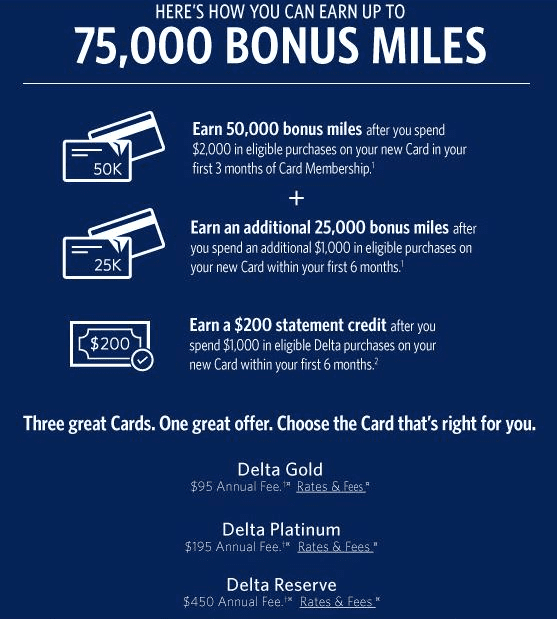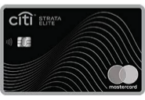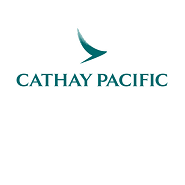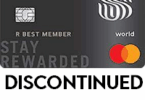In my review of the Blue Cash Preferred, I broke down what level of spending you needed to have in the groceries category to outweigh the annual fee, as compared to various other cashback rates you can attain on groceries. In this post, I would like to explain how you can do this for any card, for any spending. There are any number of calculators that will help you do this, but I think the calculation is easy enough in the general that you don’t need them. Note that this type of analysis only applies to whether you get more cashback from spending in the appropriate categories—it cannot take into account the other benefits of a card, which can significantly change your results.
Contents
Background & Results
The calculation of whether the cashback you can from an annual fee card outweighs the cashback from a no-annual fee card (or a reduced annual fee card) is actually a very simple algebra problem. We shall define some variables to make this clear.
p.af is the cashback rate, expressed as a decimal, on the card with an annual fee. p.naf is the cashback rate, expressed as a decimal, on the card with no annual fee. s is your spending in some category that earns the cashback rates of p.af and p.naf. Lastly, a is the annual fee for the card with p.af cashback, and r is the reduced annual fee for the card with p.naf cashback (obviously, r is $0 for a card with no annual fee).
Were this structured as a word problem, the question of determining a break-even point in spending would be: What amount of cashback (spending * percent cashback as a decimal) for a card with an annual fee of a is greater than or equal to the amount of cashback (spending * percent cashback as a decimal) for a card with an annual fee of r, where the annual fee r is less than the annual fee a? In equation form, we would write this as: s * p.af – a ≥ s * p.naf – r.
Grouping like & like (cashback vs. annual fees) can be done by subtracting s * p.naf from both sides of the equation, and adding a to both sides of the equation, which gives us: s * p.af – s * p.naf ≥ a – r. Using the distributive law, we can then write s * (p.af –p.naf) ≥ a – r.
The Final Equation
Since the goal is to find the level of spending that gives a break-even point, we do one last thing to isolate spending on the left-hand side of the equation and divide both sides by (p.af –p.naf): s ≥ (a – r) / (p.af –p.naf). In other words, your spending must be greater be greater than or equal to the marginal annual fee (i.e. the amount of annual fee greater than the annual fee you would pay on another card) divided by the marginal percent cashback (i.e. the percent cashback greater than the percent cashback on another card).
You must be careful to take into account spending caps on categories, as a result that requires spending more than the spending cap means that it is impossible to break even.
Simple Example: Costco Executive Membership vs. Costco Membership
I believe this is the simplest possible example because it is a binary choice without any other factors: you can either pay $55 / year for a Costco Gold Star membership, which comes with 0% cashback, or you can pay $110 / year for an Executive Gold Star membership, which comes with 2% cashback on eligible purchases. This cashback is independent of any credit card rewards. Since you must pay $55 for a Costco membership in any case, the marginal annual fee is $55. Since you get 0% cashback for a Costco membership, the marginal percent cashback is 2%.
$55 / 0.02 ≤ $2,750 is the amount you must spend on eligible purchases at Costco to break even on an Executive membership as compared to a regular membership.
Note that taxes on membership will increase the marginal annual fee (h/t reader Eric).
Complicated Example: Chase Sapphire Reserve vs. Chase Sapphire Preferred
This example is a bit trickier and the actual result will depend on your personal perspective. The Chase Sapphire Preferred has a $95 annual fee after the first year and gives 2x on dining & travel. The Chase Sapphire Reserve has a $450 annual fee and gives 3x on dining and travel. To truly evaluate the earning rate on these cards, we must take into account the consistently cash-able benefits of each card & assign a valuation to Ultimate Rewards points.
First: most would agree that the effective annual fee of the Reserve is only $150 because of the $300 annual travel credit. In order for this to be true, there is an implicit restriction that I will make explicit: this is only the case when you are book travel that you already would’ve booked & would’ve booked with cash. note: the annual fee is canceled by the travel credit for the first two years, so the cashback comparison needn’t be applied at that point. This calculation is for year 3 of card membership and beyond.
Second: the Reserve sets the floor of UR point redemption at 1.5 cents per point while the Preferred sets the floor of UR point redemption at 1.25 cpp. The enhanced cashback rate is thus 4.5% on dining and travel for the Reserve and 2.5% on dining and travel for the Preferred. However, because both cards gives you access to travel partners, it would be equally valid to value UR points the same for both cards—a reasonable value would be 2 cpp, yielding 6% on the Reserve and 4% on the Preferred.
The marginal annual fee for the Chase Sapphire Reserve is thus $55. The marginal percent cashback is 2% for both of the valuations we have used. As you may recognize from the previous example:
$55 / .02 ≤ $2,750 is the amount you must spend on travel & dining to break-even on the Reserve as compared to the Preferred.
Now, if you were to use a valuation of 1.5 cpp for both the Reserve & Preferred, you would get 4.5% on the Reserve and 3% on the Preferred, which would give you:
$55 / .015 ≤ $3,666.67 is the amount you must spend on travel & dining to break even on the Reserve as compared to the Preferred.
Further discussion is warranted if you believe that UR have different valuations and you have, for example, a Chase Freedom. Using an enhanced cashback rate for the Freedom of 7.5% with the Reserve (1.5 cpp * 5x) and 6.25% (1.25 cpp * 5x) with the Preferred:
$55 / .0125 ≤ $4,400 is the amount you must spend in the quarterly categories at 5x to break even. You do not even need to spend any money on travel & dining with the Reserve to offset the annual fee in this scenario.
Were you crazy enough to want to know how different valuations affect the Chase Freedom Unlimited, it’s 2.25% on the Reserve and 1.875% on the Preferred:
$55 / .00375 ≤ $14,666.67 is the amount you must spend on the Freedom Unlimited to break even.
By design, this does not take into account any of the variable cash-able benefits & non-cash-able benefits of the Reserve, which Will has covered here.
Digression: Multiple Cashback Rates & Hyperplanes
The main thrust of this post is above, and you needn’t worry about this section. But in case you’re interested: the break-even points when comparing one card to multiple cashback rates can be calculated, but this quickly spirals out of control because each cashback rate requires a separate variable. Computer scientists & those who’ve taken multivariate may recognize that multiple cashback rates is, in essence, a constraint optimization problem, and its solution is a hyperplane. In simpler terms, the number of cashback rates (i.e. the number of variables) is the number of dimensions it takes to solve the problem, and the solution is in one less dimension. Solving a problem for two cashback rates requires a 2-dimensional space (the Cartesian plane) and the solution is a line. Solving for three cashback rates requires a 3-dimensional space and its solution is a 2-dimensional plane of values. Beyond that, you can’t even visualize the solution.
(For fun, you can plug the following into Wolfram Alpha: .02 * x + .0125 * y ≥ 55 [this article’s thumbnail & solution for spending on the Reserve + Freedom at 1.5 cpp vs 1.25 cpp for the Preferred]; .02 * x + .0125 * y + .00375 * z ≥ 55 [solution for spending on the Reserve + Freedom + Freedom Unlimited at 1.5 cpp vs 1.25 cpp for the Preferred]). note: Wolfram does not graph the solution bounded by x > 0 and y > 0, so the graph looks a little bit wonky; the y-intercept is $4,400 and the x-intercept is $2,750 for the thumbnail.
This does not mean that you can’t calculate which card is better for your spending, however! Instead, you must reduce the dimensions of the problem, by fixing a variable. Instead of allowing your dining & travel spending to be any number, you can set it to a certain value, such as $2,000. (in the Reserve + Freedom example, this leads to the result that 0.02 * $2,000 + 0.0125 * {spending in Freedom 5x categories} ≥ $55, or: you need to spend $1,200 in the 5x categories on the freedom to balance the increased AF).
This is why proper budgeting is, in my opinion, the key to optimizing your credit card rewards. It eliminates any guesswork and tells you right away where your rewards spending is better.
Questions? Drop them below.






